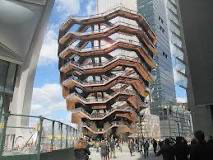#lamsters
Text
Gay masseur raw riding
fuck her mother while she is in the hospital
Mischievous perfection enjoys deep fuck
Turkish porn
XXL double dildo fucking her wrecked holes
Indian Sex Queen Reshma New sex movie hot sex
muscle girl nude workout
Swathi naidu showing boobs out from dress
Tiny teen gets fucked after masturbating in virtual reality
Ebony Daya Knight And Misty Stone Share Gloryhole Cock
#megillahs#flanch#scomfit#nonschismatic#jermacore#fussy#Isac#ingenite#noneducative#scuz#ensilaged#lamsters#Voltaic#sinestro#clamshell#game-cock#search#pancreatin#prioritized#haggadal
0 notes
Text

OH NO HES THREE DIMENSIONAL AND UGLY NOW (drawing by keysmandude)
22 notes
·
View notes
Text
Trigger warning badass edit
12 notes
·
View notes
Text
Pretty brunette Marina Angel gets fully satisfied
Chastity slave licks Mistress E's delicious pussy to orgasm while she plays with clit sucker toy
Porn gay male men mechanical fags orgy Bathroom Bareback Boypatrons
Damn hot Transbabe friends Aspen and Khloe loves butt sex
Spex gilf pussylicked by amateur teen
Hot MILF Brandi Love Says "Do you like watching me stroke your friend?!" S1:E2
Gaping hOle indian ass
Kama Kama Sutra Power
Huge Boobed Maggie Green & Milf Rachel Storms Eat That Cunt!
Cuzzin fat ass
#sharecrop#lamster#anterofrontal#pulgada#Constantino#Mahmud#unduly#morabit#generalisable#theology#chuting#incivic#sensimotor#terrific#txt#overproved#antimonious#humdrums#EEM#affile
0 notes
Text

Drawing on Photoshop is fun, so here's some nightmare-inducing doodles cause having free will is truly an amazing concept. Also I am working on something for the Lamster's 25th anniversary, just been busy with some other life thingies and stuff. But anyways, happy late 25th birthday to the stinky gay sheep, I'll have something epic out for her, I promise. :,)
23 notes
·
View notes
Note
guess whos back lamster !!
brains hi !!! can't believe its the return of tumblr user dumb-bitch-brain <33 tumblr account dumb-bitch-brain will always hold a special place in my heart
(i'm saying as if we don't talk basically everyday ahsdkjhf)
6 notes
·
View notes
Photo

It was quite surprising when early last year a debate broke out about Philip Johnson’s sympathy for Germany’s Nazi regime and his blatant antisemitism. Already Franz Schulze’s Johnson biography published in 1994 provided a detailed account of his travels in Germany and his aspirations to establish Fascism in the USA, a period in Johnson’s life that was enriched with additional details by Mark Lamster’s 2018 book „The Man in the Glass House“, published by Little, Brown and Company. Lamster devotes almost a third of his book to Johnson’s early life that besides his appalling love affair with Nazism also entailed the epoch-making exhibition „The International Style: Architecture since 1922“ at the MoMA and him heading the latter’s architecture and design department. And of course his sarcastic, gossipy but at the same time witty and alert personality also is perfect material for biographers. Lamster amalgamates Johnson’s extravagant personal life and his no less changeful professional life in a page-turning narrative: Johnson appears as an erratic personality, constantly searching for something to believe in. A late-comer in the field of architecture he first and most famously worshipped Mies van der Rohe who kept him on a save distance then overwhelmed Robert Venturi and postmodernism only to follow Frank Gehry’s idiom late in his life. This frequent change in intellectual and design principles also hints at the lifelong insecurity Johnson felt towards his own abilities. As Lamster carves out Johnson was frequently shaken by periods of utter self-doubts taking turns with his shameless hunt for publicity. The latter also brought him together with Donald Trump in the 1990s for whom he designed some disappointing buildings that nonetheless kept Johnson in the public eye.
Lamster’s biography is an exciting, well-written read that elucidates all the contradictions and personal shortcomings but also fascinating, charming and outstandingly intelligent traits of Philip Johnson. A must read!
35 notes
·
View notes
Text
From Alexandra Lange, Mark Lamster, and Carolina A. Miranda, it’s the always entertaining 2023 Architecture and Design Awards. Brutalism, Barbie, Beyoncé, Breuer, Bilbao, and lots of other things that don’t start with B.
1 note
·
View note
Text


from billions 4x11 lamster:
CONNERTY: The time table’s been turbo charged. We gotta do this today.
JACKIE: Tonight. As we used to say before a schoolyard scrap: Tonight, long stick goes boom.
youtube
#i've never heard of this band or this song before but the reference proved surprisingly easy to find by just searching ''long stick''#billions#4x11#brian koppelman#bryan connerty#jackie connerty
3 notes
·
View notes
Text
The uncomfortable, inaccessible trend plaguing new buildings

If you have visited a new building on a college campus recently, or perhaps a new museum or library, you have no doubt encountered the so-called bleacher stair, a broad flight of steps that doubles as amphitheater-style seating.
Over the past decade or so, bleacher stairs have become a ubiquitous marker of contemporary public architecture.
It’s time for the trend to stop.
The origins of the fad can be traced to the opening of a New York outpost of the Italian fashion house Prada in December 2001.

The design of that store was the work of Dutch architect Rem Koolhaas and featured a pair of zebrawood stairs — Koolhaas dubbed them “The Wave” — that could also be used for seating and display.

In The New York Times, critic Herbert Muschamp gushed over the design, writing that “time and space have revolved into miraculous alignment.”
Its subsequent proliferation serves as a good example of how avant-garde design, or at least a consumerist version of it, filters down to the mainstream.
The publicity generated by the star architect and his glamorous client inevitably attracted the attention of other architects, who have been doing their best to recapture that project’s magic, such as it was.
Soon enough, bleacher stairs were popping up all over the country, the trend only accelerating over time, the proverbial snowball rolling downhill.

The first bleacher stair I recall seeing in the Dallas area was at UT Dallas’ Arts and Technology Building, completed in 2013.
That same year, architecture firm HKS made a bleacher stair the centerpiece of its downtown offices.
More recently, the winning proposal for the expansion of the Dallas Museum of Art, by the Spanish architecture firm Nieto Sobejano, has two of them.

Bleacher stairs at (top row, from left) the Perez Art Museum Miami, the Massachusetts…
Bleacher stairs at (top row, from left) the Perez Art Museum Miami, the Massachusetts Institute of Technology, the University of Toronto, (bottom row, from left) the San Francisco Museum of Modern Art, the Glassell School of Art in Houston, and Boston University.(Mark Lamster / Mark Lamster)
Their popularity is understandable.
They look dramatic, signal an interest in fostering a sense of community — an essential goal for public institutions in the post-pandemic era — and satisfy two functions at once, turning circulation space into a place for public gathering.
For architects, they are an easy way to deliver a sense of monumental grandeur.

At the American Museum of Natural History’s recently opened Gilder Center, in New York, it is a bleacher stair — and not, say, a dinosaur skeleton or some other natural wonder — that greets visitors as they enter the Jeanne Gang-designed building.

The problem is that the bleacher stair’s virtues are more theoretical than practical.
Functionally, bleacher stairs are awkward at best; a stair is far from ideal as a seat back, and if there are no cushions (commonplace, in my experience) they can be exceedingly uncomfortable.
Conversation with more than one person is difficult, because everyone is pointed in the same direction and often at different levels.
Not surprisingly, they tend to be under-used.

“The sit-step stair is an all-in-one seating option that in the end is not ideal for anything, really,” says Colin Koop, a design partner in the New York office of the architecture firm SOM who often builds for educational institutions. “For large audiences, backless bleachers are uncomfortable almost immediately, leaving you aching for a proper seat. Meanwhile, on a daily basis, people would much rather sit at reading tables, banquettes or lounge seating.”
Beyond a lack of comfort, bleacher stairs present a variety of other problems.
They are an inefficient use of space and material, taking up large areas that could be more constructively used for gathering spaces and other functions.
Perhaps most troubling is that they are inaccessible and unwelcoming to anyone with mobility issues, and effectively segregate those individuals from the rest of the public.

“For me, they suggest that certain physical capacities such as climbing stairs are prerequisites for participating in public life and collective activities,” says architect David Gissen, author of the book The Architecture of Disability: Buildings, Cities, and Landscapes beyond Access.
“For a building to be truly accessible, it should not set up any unnecessary barriers,” architecture critic Alex Bozikovic wrote in a 2022 column on accessibility and design in The Globe and Mail of Toronto.

“People with disabilities should have the same experience of a building as anyone else.”
A bleacher stair alternative at MIT's Schwarzman College of Computing, design by Colin Koop…
A bleacher stair alternative at MIT's Schwarzman College of Computing, design by Colin Koop of SOM.(SOM / SOM)
A failure to accommodate those with disabilities is a moral failing, not to mention a potentially illegal one.

That issue was highlighted, recently, when city officials in New York City sued architect Steven Holl for failing to meet disability requirements with the Hunters Point branch of the Queens Public Library, where several levels of books could be reached only by stairs.

More egregious is the Vessel, Thomas Heatherwick’s tourist attraction at New York’s Hudson Yards, a 150-foot-tall basket of stairways largely inaccessible to anyone with mobility issues.
(After a rash of suicides, it has been closed for three years, though it will soon reopen.)
There are alternatives, and Koop’s recently opened Schwarzman College of Computing at MIT provides a good example, one that offers a compromise between the bleacher stair and more conventional steps.
To achieve that, Koop placed a lounge area with built-in seating between the parallel runs of a double stair, at once satisfying the demand for a ceremonial entry while providing a pleasant and accessible gathering space.
“Immediately on the inside you are confronted with a three-sided conversation pit designed to attract small groups, flanked by twin oak stairs,” Koop says. “Only above that does it start to resemble a sit-step, but even then it has a variety of benching to allow students to cluster together or sit alone.”
Gissen, for his part, would try a more out-there option, one that seems drawn from 1960s counter-culture.
“I think a giant mattress would be a more appropriate element with which to gather people together,” he says. “Many disabled people have called for cities to re-imagine rest as a public good, and I think it is important that we explore the possibilities.”
A giant public mattress might be a tough sell — though I’d like to see someone try it — but between that option and Koop’s more conventional approach at MIT, there is plenty of room for experimentation.
The broader point is that architects need to be more inventive as they plan new public spaces, and their patrons need to demand that those spaces are accessible for the entire population.
0 notes
Text
City of Dallas, Will You Save Your Frank Lloyd Wright-Designed Theatre or Not?
Recently Mark Lamster, architecture critic for the Dallas Morning News wrote an article posted to the newspaper's website regarding the fate of Frank Lloyd Wright's 1959 Kalita Humphreys Theatre in Dallas, Texas. Lamster's report highlights maddeningly frustrating events that occur when municipal government gets involved in architectural restoration.
According Lamster, there have been no efforts to preserve the decaying the Kalita Humphreys Theatre in over a decade. The city hired "architects Diller Scofidio + Renfro and a team of preservation and theater consultants" to develop a $300 million plan for the Dallas Theater Center that would include restoring the Humphreys Theatre and building four additional structures. The plan was rejected not only by the City Council, but also by neighbors and supporters of the park into which the project would abut.
The Dallas Theater Center seems willing to scale back the project, but apparently, now the city isn't interested, so the scaled-back plan is currently been shelved as well. Lamster stated in his story, "the [Dallas Office of Arts and Culture] OAC has budgeted $7.63 million for repairs from its 2024 bond request" to the theater. Most of which would go to replace the aging HVAC system. Meanwhile, the theatre continues on its downward to deteriorate.
Read Mark Lamster's entire article on the Dallas Morning News website.

Frank Lloyd Wright, Kalita Humphreys Theatre (1959), Dallas, Texas. Photo © Massachusetts Institute of Technology, photograph by G. E. Kidder Smith. Image source.
0 notes
Video
Adam Munnings | Dazed x Calvin Klein – OASIS from modest department on Vimeo.
We proudly present ‘OASIS’ by Adam Munnings in collaboration with Calvin Klein and Dazed
Titled Queer Lens, ‘OASIS’ is part of a series of short films exploring the idea of chosen family
and spotlighting a new generation of queer filmmakers from across the globe.
starring
Phoenix Chase-Meares, BlackPearl De Almeida Lima, Anna Deborah Disse, Alvin Collantes, Nosa Moses, Dornika Kazerani, Dana Pajarillaga, Riley Davidson, Matthias Ly, Aaron Pahrmann
Poem by Daniel Marin Medina
spoken by Riley Davidson
a modest dept. production powered by DAZED
Creative Director: Fred Paginton
Art Director: Alexander Venndt
Studio Editor: Louis Almond
Head of Production: Faye Young
Producer: Hetty Yoxall, Liam Healy
Senior Project Director: Morgane Kirk
Senior Project Manager: Kyle Singh
Director: Adam Munnings DOP: Marco Schott Editor: Gerrit Piechowski
Executive Producer: Johannes Lehmann
Head of Production: Benedikt Merten
Producer: Nikita Mikitin
Junior Producer: Badria-Lea Bader, Karina Tateosyan
1st AD: Phoenix Chase-Meares
Set-PA: Olivia Waligora
Cast Coordinator/Ethics Advisor: Felix Schütze
Photographer Talent Stills: Arnaud Ele
DOP Q+A: Kai Chase-Meares
Sound Engineer Q+A: Thor Rixon
Photographer BTS: Maks Klénov
Videographer BTS: Sol Astolfi
Choreographer: Johnny McMillan
Set Design: Tyoma Asatrian
Stylist: Halla Farhat
Styling Assistant: Diego Martinez, Rachel Colless
Handmade Jewellery: Zanhyang Song
Make-up Artist: Haneen Ajub, Susanna Jonas, Jesse Strikwerda
Make-up Assistant: Stella Chiara Kettermann
Hair Stylist: Taiga Sato, Anastasiia Tymoshchuk, Marie Berger Key Grip: Dennis Klemba
1st Assistant Camera: Florian Bellack 2nd Assistant Camera: Ksenia Gordiash Steadicam Operator: Lucas Heinze
Gaffer: Alan Waddingham
Best Boy: Kwame Boama
Best Girl: Laura Zeppelin
Electrican: Lenn Lamster
Pult Operator: Nick Beusterfeld
Swing Driver: Luc Brocker
Base Manager: Mustafa Aktasoglu
Location: Wilhelm Hallen & Oat Mil Studio // Katharina Koronowski & Sophie Pfuhler
Catering: Diana Quach
Post Producer: Felix Schütze
Editor TikTok: Yannic Nixdorf
Colorist: Florian Staerk
Music Composition/Sounddesign/Mix: Thor Rixon
Special thanks to
Wilhelm Hallen & Oat Mil Studio // Katharina Koronowski & Sophie Pfuhler Cinegate Berlin // Juri Maric
Raketa GmbH // Denny & TC
Cinegrell Berlin
and to queer chosen families.
0 notes
Text
The Man In The Glass House
The Man In The Glass House
The Man In The Glass House Mark Lamster
When Philip Johnson died in 2005 at the age of 98, he was still one of the most recognizable–and influential–figures on the American cultural landscape. The first recipient of the Pritzker Prize and MoMA’s founding architectural curator, Johnson made his mark as one of America’s leading architects with his famous Glass House in New Caanan, CT, and his…

View On WordPress
0 notes
Note
FUCK YOU FOR TAGGING THAT POST JIMIN FUCK YOU IM NOT EVEN A FAN OF KPOP AND I'VE FUCKING SEEN THAT AND HAVE BEEN TRYING TO REPRESS IT AND YOU FUCKING BROUGHT IT TO MIND AGAIN GOD DAMN YOU

10 notes
·
View notes